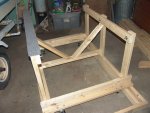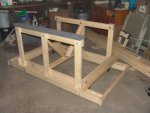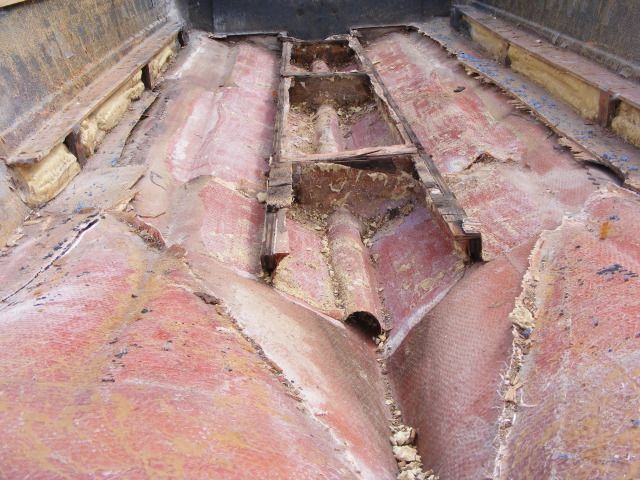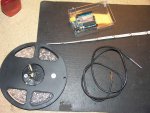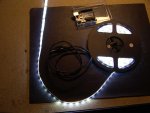Re: Damaged Hull -- Pictures
The "drainage pipe" pipe your referring to is simply for water that gets in the forward compartment to be able to drain to the stern so the water can be pumped out. I was just talking about this on another thread. Pvc pipe is sometimes used for this or a channel is made using cardboard or whatever to shape it and provide a channel with fiberglass. The reason a pipe is used in alot of smaller boats is because you don't have the height on smaller vessels to expel water out of the front anchor locker or starage compartment via a thru hull drain.
The nice thing about pvc is it won't rott and you can glass it in just like you would anything else. Fiberglass after all is nothing more than a plastic like pvc. This especially usefull for running under a fuel tank as the tank can sit right on it and not hurt it. The pvc can be run all the way back to the bilge through your bulkheads and just glassed into the bulkheads so water or air doesn't intrude into the hole around it.
I know jbcurt mentioned condensation and that might be the reason for the tube, that is very unlikely as it wouldn't provide airflow without an intake somewhere with forced air. Just thought I would throw that in there.

All your bulkheads and stringers need to drain properly to the stern in the case that water does make its way in there via a rub rail, condensation etc.
As far as the exterior of your hull, take a look through my refurb thread sometime. I completely restored the bottom gelcoat on my boat that most said couldn't be done. The product I used was "Rhino film discs". You can use them dry on gelcoat, no need to wet sand. You use them on a da sander and they come in multiple grades. I would probably start with 800 grit on your hull and then go over with 1000 grit. Then just light compound and your done. Wax if you like afterwards.
Another option is to just try and compound the hull or wet sand. Don't get to aggressive, stick with nothing less than 600 grit if you go this route and prepare yourself for sore shoulders.
The gelcoat on the inside can be rolled. It should have no less than three coats and you do them all at one time with the last coat of gelcoat having a wax additive so it will cure all three coats hard. Keep in mind that gelcoat is nothing more than white resin. You will be covering up everything and making it pop because it will be white. Gelcoats are tintable, but the white white will not match your hull out of the can. It is very hard to get a perfect match. Also, it all in the prep, if you have a rough surface before you gelcoat (rough Fiberglass), it will show every defect and rough areas. The rolling has to be done carefully as to not get raised edges from the roller. Its good to go in a couple different directions. Overlapping into what you just gelcoated. Its not hard at all, experience just makes it a smoother process.
For beginners I suggest you take a piece of plywood first and practice rolling it out until you feel comfortable. But thats a long way away, Get to work!






















